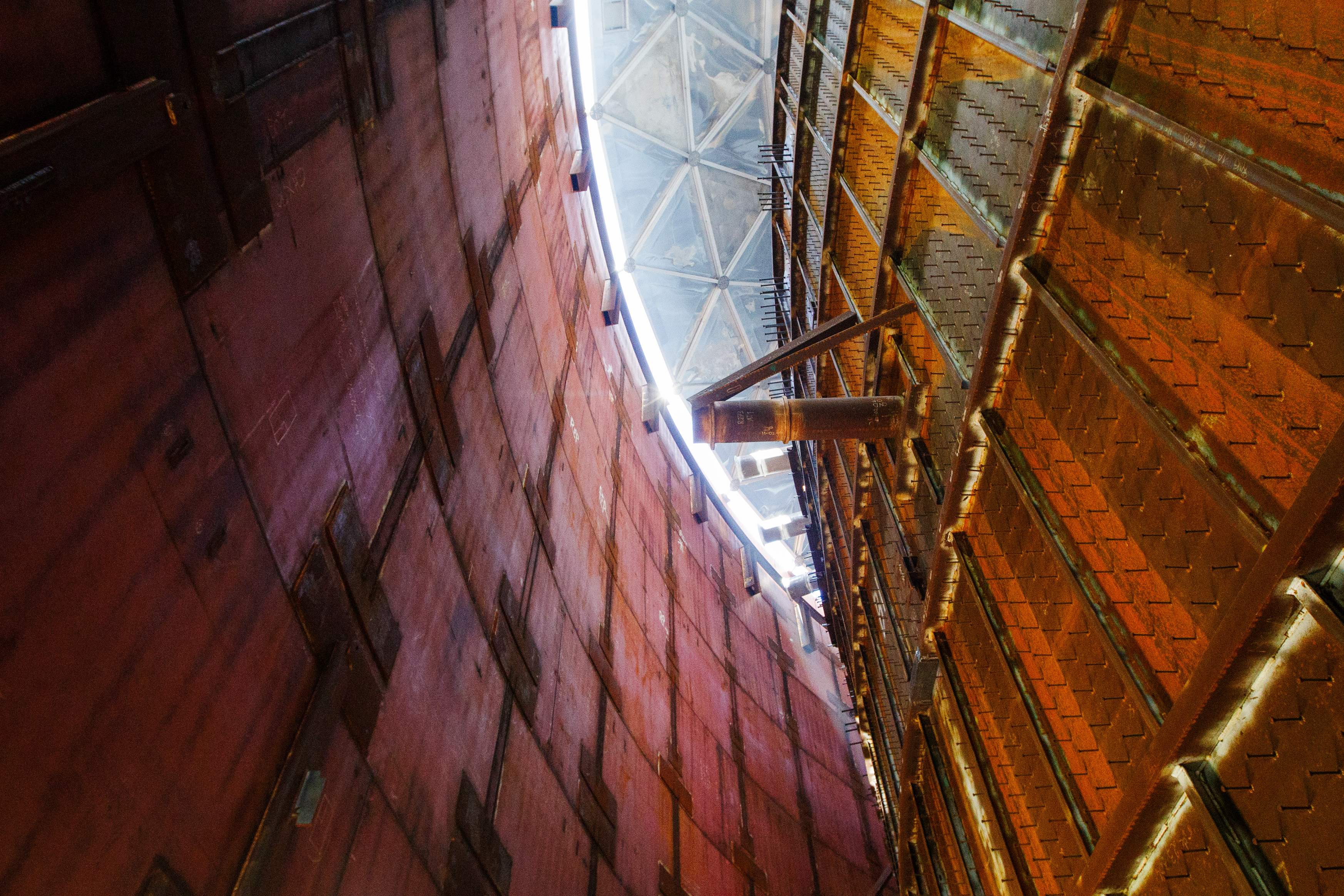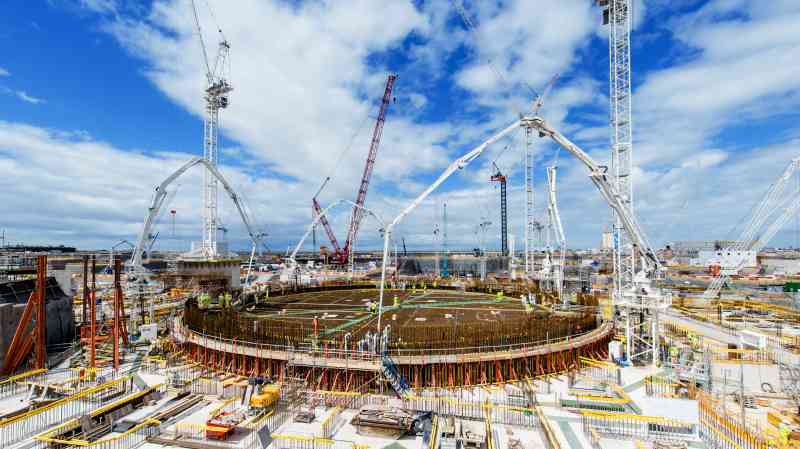The first thing you notice as you approach Hinkley Point C is the sea of cranes. There are dozens of them, jutting into the Somerset sky from the site where EDF, of France, and CGN, the Chinese state nuclear group, are building Britain’s first new nuclear plant in a generation.
One stands out: a 250 metre-tall yellow beast known as “Big Carl”. It is the world’s largest crane and is central to the companies’ battle to deliver the project successfully.
Hinkley Point C’s twin reactors should produce enough electricity to meet 7 per cent of Britain’s needs. Given the go-ahead in 2016 at a cost of £18 billion, the plant was slated to generate its first power before the end of 2025. Yet with projects to build the same type of reactor elsewhere in the world plagued by cost blowouts and delays, critics have long doubted EDF’s promises to build Hinkley Point “on time and on budget”.
Sure enough, four years on, the budget has risen to between £21.5 billion and £22.5 billion and EDF says that there is a risk that first power may be delayed until 2027, adding £700 million in costs; thanks to disruption from Covid-19, that risk is now “high”.
Last week, The Times was allowed on site to see how the companies are trying to learn lessons from previous projects and keep Hinkley Point on track.
In two enormous cylindrical temporary buildings, or “bunkers”, steel casings for the reactors are being welded in giant sections. When a part is completed, Big Carl — capable of lifting up to 5,000 tonnes — will pick it up and swing it across the site so that it can be slotted into place on the reactor.
“These bunkers didn’t exist in Flamanville,” Stuart Crooks, the EDF executive who manages Hinkley Point, said. Flamanville, the French prototype of the Somerset reactor, is running a decade late and more than three times its original budget. “All of that work was done on the reactor, whereas here we prefabricate the piece then move it with the crane.” The advantages of prefabrication are said to be threefold, comprising improvements in quality, in safety and in schedule. Parts are manufactured in factory conditions and workers can carry on constructing other parts at the same time. They do so armed with tablet computers that bear a 4D model of the plant, designed to avoid misalignments.
When The Times visited, a lifting frame 46 metres in diameter was suspended from Big Carl, ready to lift a 170-tonne steel liner that will sit beneath the second reactor. Mr Crooks said that the project had learnt not only from Flamanville but also from work on the first reactor — this second liner was built 30 per cent more quickly — and while steel reinforcement bars for the concrete base of the first unit were fitted “by hand” on the first reactor, for the second, they, too, were prefabricated. “In ten days we completed work which cost us ten weeks on unit one.”
Mr Crooks, 55, joined the nuclear industry in July 1986, three months after the Chernobyl disaster that still fuels opposition to the technology. “I thought, ‘I’ve got to make sure it never happens again.’ That’s what I devoted my whole career to.”

Part of the reason that Hinkley Point is so costly is down to design features intended to prevent such a disaster occurring here — from the steel liner to contain radiation in the event of an accident, to the reinforced concrete walls designed, post-9/11, to withstand impact from aircraft.
Changes to accommodate UK-specific “instrumentation and control” system and other requirements have been one factor pushing Hinkley Point’s costs up. Mr Crooks said that fitting the first-of-a-kind instrumentation and control system remained one of the biggest risks ahead for the project.
Covid-19 clearly remains another big risk, with EDF warning last week that productivity at the site and in supply chain factories were still being affected. The company said that it had done what it could to minimise delays, from bringing in extra buses to transport workers to sending contractors to France to bring back parts from a factory laid low by the pandemic. EDF believes that it can catch up on Covid-19 delays by the end of next year, so long as operations and its supply chain are back to normal by the end of 2020.
How confident was Mr Crooks that the plant would start up in 2025 as planned? “There’s a long way to go yet. It is a big, complex project.”
In recent months a new threat has loomed over Hinkley as Conservative backbenchers raise concern about the continued involvement of CGN, the Chinese state nuclear group, amid rising tensions with China. Mr Crooks said that the project could continue without the 30 or so CGN staff working on it, although they brought “helpful” expertise from leading construction of the Taishan plant in China – the first of this reactor type to enter operation. He insisted he was not losing sleep over what would happen if CGN – and its crucial funding – were to leave or be forced out of Hinkley. “All I can control is building this power station: that’s what I focus my energy on. What the government decides to do or not to do is all speculation,” he said. “I’ve got enough to worry about.”
Behind the story In 2016, when Hinkley Point C was approved, the government said that it would be the “first of a wave of new nuclear plants”. Yet of five other projects planned around Britain, three have been shelved after Hitachi and Toshiba, the Japanese developers, struggled to finance their huge costs.
Big questions remain over the other two, proposed by EDF and CGN: a sister station to Hinkley Point, at Sizewell in Suffolk; and a plant at Bradwell in Essex using Chinese technology — a controversial proposition as British relations with China sour.
EDF and CGN invested in Somerset because of a government contract under which consumers would pay a high price for the electricity the site eventually generates. This has been widely criticised as costs of technologies such as offshore wind fall and the government has said that subsequent reactors must be substantially cheaper.
The French group says that Sizewell should cost 20 per cent less to build than Hinkley Point because of replicating the design. However, a viable funding model has yet to be agreed. The government has considered a “regulated asset base” model proposed by EDF, but this would put consumers on the hook for a share of any cost overruns at Sizewell. At Hinkley Point, the subsidy contract does at least shield consumers from the increase in construction costs. Ultimately, Stuart Crooks, of EDF, said, “the government needs to decide if it wants nuclear or not”.
